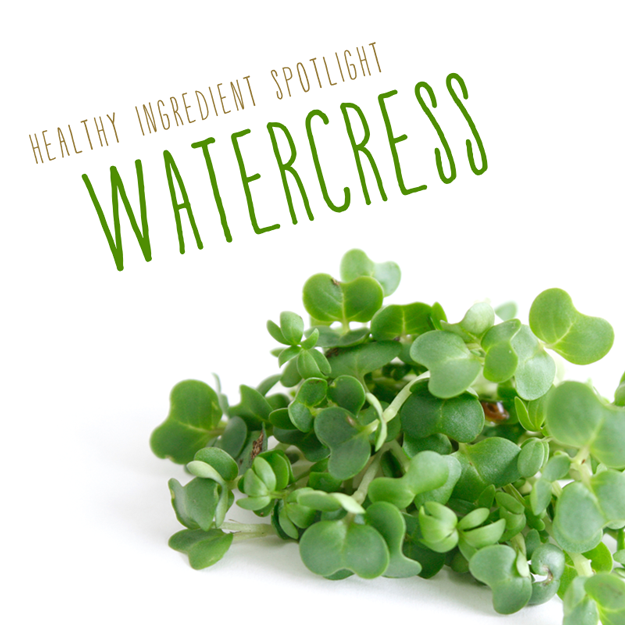When it comes to consuming a healthy diet, most people would agree that green leafy vegetables play an important role. Kale currently enjoys the spotlight, thanks to its high nutrient density score, availability and versatility, even if the taste does take some getting used to. But it’s not the lone inhabitant at the top of the nutritional powerhouse ladder. It shares top spot with other dark leafy greens, particularly watercress – today’s healthy ingredient spotlight.

Sweet Facts About Watercress
Watercress is somewhat of an aquatic plant and generally found near slow-moving streams or shallow springs. It’s a member of the cruciferous family, so it’s related to cabbage, collard, kale and arugula. According to recent studies, watercress is the most nutrient dense vegetable per 100 calorie serving. It’s high in essential vitamins and minerals, including potassium, fiber and iron, as well as vitamins A, C and B. It also has the highest concentration of Vitamin K in a 100 calorie serving – more than 300 percent of your daily needs! Impressive, right?
It gets better: like most dark leafy veggies, watercress is rich in antioxidants, which are shown to help protect against free radical damage and support healthy cardiovascular function. Watercress:
- Contains high values of dietary nitrates, which are shown to help lower blood pressure and enhance athletic performance
- Supports healthy bone density, which reduces the risk of bone fractures
- Helps enhance a healthy complexion, due to its high antioxidant concentration
- Contains large amounts of the phytonutrients lutein and zeaxanthin, which help support eye sight and eye health
- Is rich in isothiocyanates and gluconasturtiin, which help strengthen bones and protect against infection
OK, So How Does it Taste?
Nutrient dense foods aren’t going to do anyone any good if they don’t get eaten. Luckily, watercress is delicious. Delicate and fresh, it has spicy, peppery notes reminiscent of arugula, and a texture similar to spinach (best of both worlds, perhaps?). It’s easily consumed raw in a salad, or blended in a spread/dip for sandwiches or crudités (it’s delicious with Lifeway Farmer Cheese and toast!). You could also add it to a blender for your favorite kefir smoothie, or juice it with other veggies for a clean, earthy drink.
You can find watercress in many major grocery stores, but you might have to ask someone to help you locate it. It’s typically stored with water. It should be rinsed thoroughly and soaked in water with salt of hydrogen peroxide for at least thirty minutes before using (to kill any lingering bacteria that thrive in aquatic settings). Store it in your fridge submerged for two to three days, if it lasts that long!